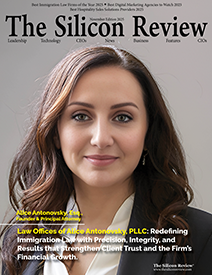>>
Industry>>
Capital Market>>
Dollar Slides to Three-Year Lo...Dollar Slides to Three-Year Low amid Fed Autonomy Concerns
The Silicon Review
22 April, 2025
A sharp drop in the U.S. dollar to a three-year low signals mounting investor anxiety over political scrutiny of Federal Reserve leadership.
The U.S. dollar fell to its lowest level in three years this week, amplifying concerns about sustained volatility in global capital markets. The decline followed renewed scrutiny of Federal Reserve independence, as former President Donald Trump publicly criticized Chair Jerome Powell, igniting fears of political influence over monetary policy at a sensitive time for the U.S. economy. This latest movement in currency markets is more than a headline—it’s a ripple with serious implications for global finance and industrial planning. The dollar, often seen as a benchmark of economic confidence and a safe haven for institutional capital, has now become a point of vulnerability amid escalating uncertainty. With the greenback slipping against major currencies including the euro and yen, analysts are forecasting adjustments in import costs, hedging strategies, and long-term financial planning across sectors.
While foreign exchange markets are notoriously sensitive to geopolitical noise, this decline stands apart due to its compounding effects on inflation-sensitive industries. For U.S.-based industrial automation firms reliant on imported components, a weaker dollar could narrow margins unless pricing strategies are recalibrated swiftly. At the same time, exporters may see short-term gains, but global confidence in U.S. economic stability is being tested, especially as central banks and institutional investors closely monitor Washington’s stance on Fed independence.
The Treasury has yet to issue a formal response, but bond yields suggest that institutional players are recalculating risk. For capital market strategists, this is a cautionary signal: in a high-volatility environment, even perceived threats to regulatory autonomy can spark significant shifts in financial fundamentals. Amid this uncertainty, the priority for financial leaders will be scenario planning and strengthening currency risk mitigation frameworks. As investor sentiment becomes more fragile, safeguarding trust in independent monetary governance could be a key pillar of financial resilience.


_2025-11-17_06-38-14.webp)

 (1)_2025-10-21_13-35-14.webp)

_2025-10-02_10-21-48.webp)